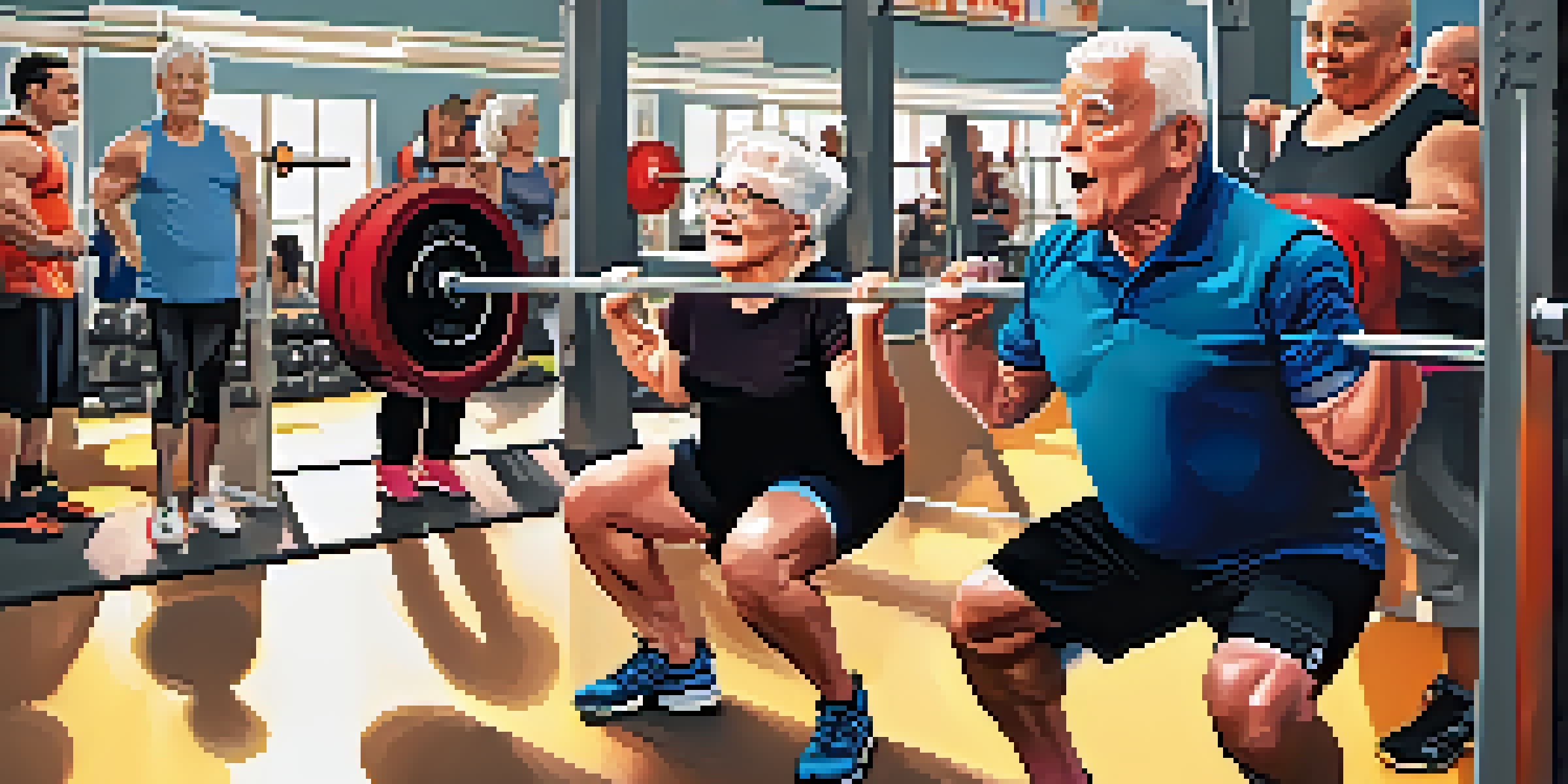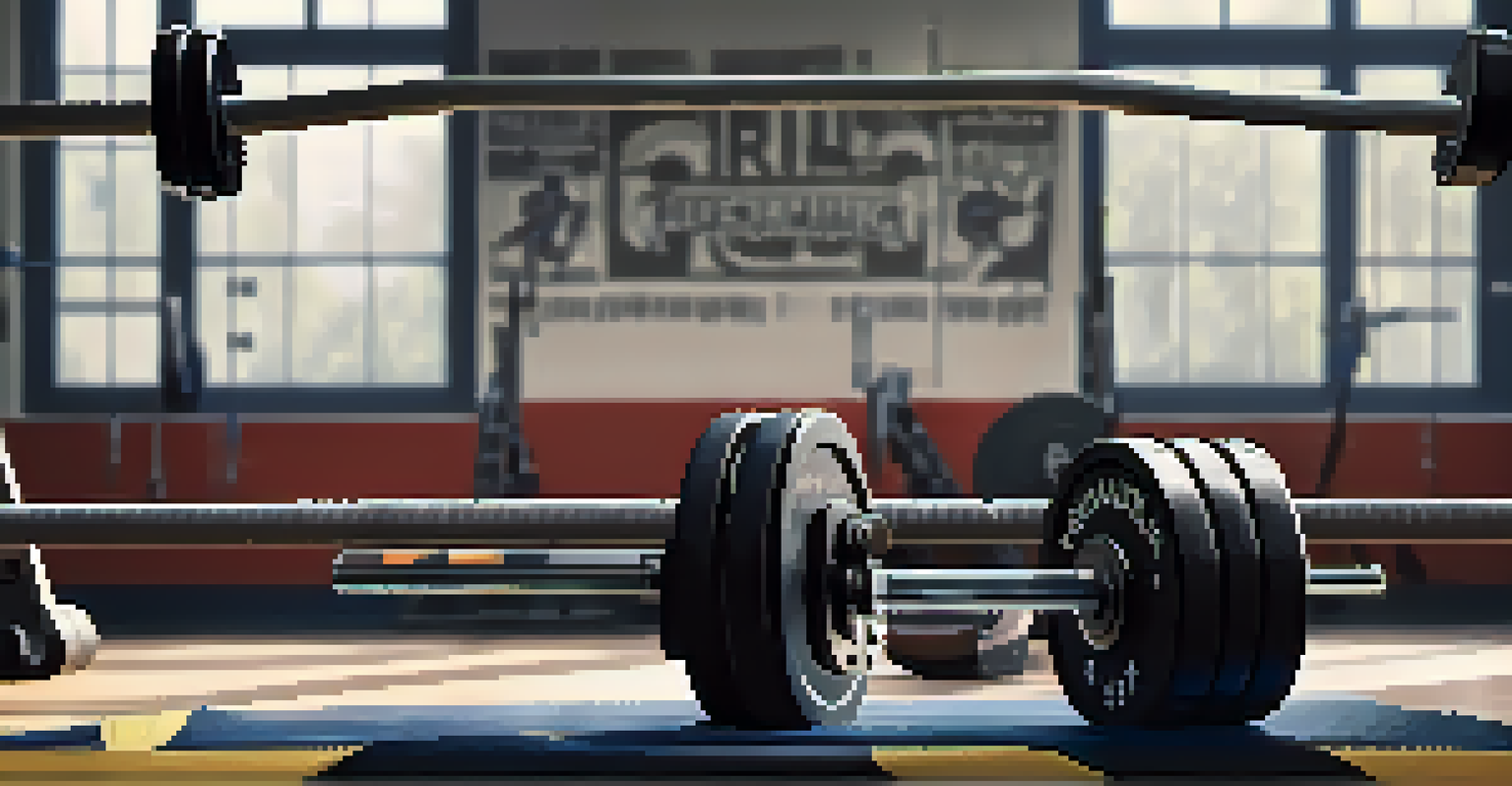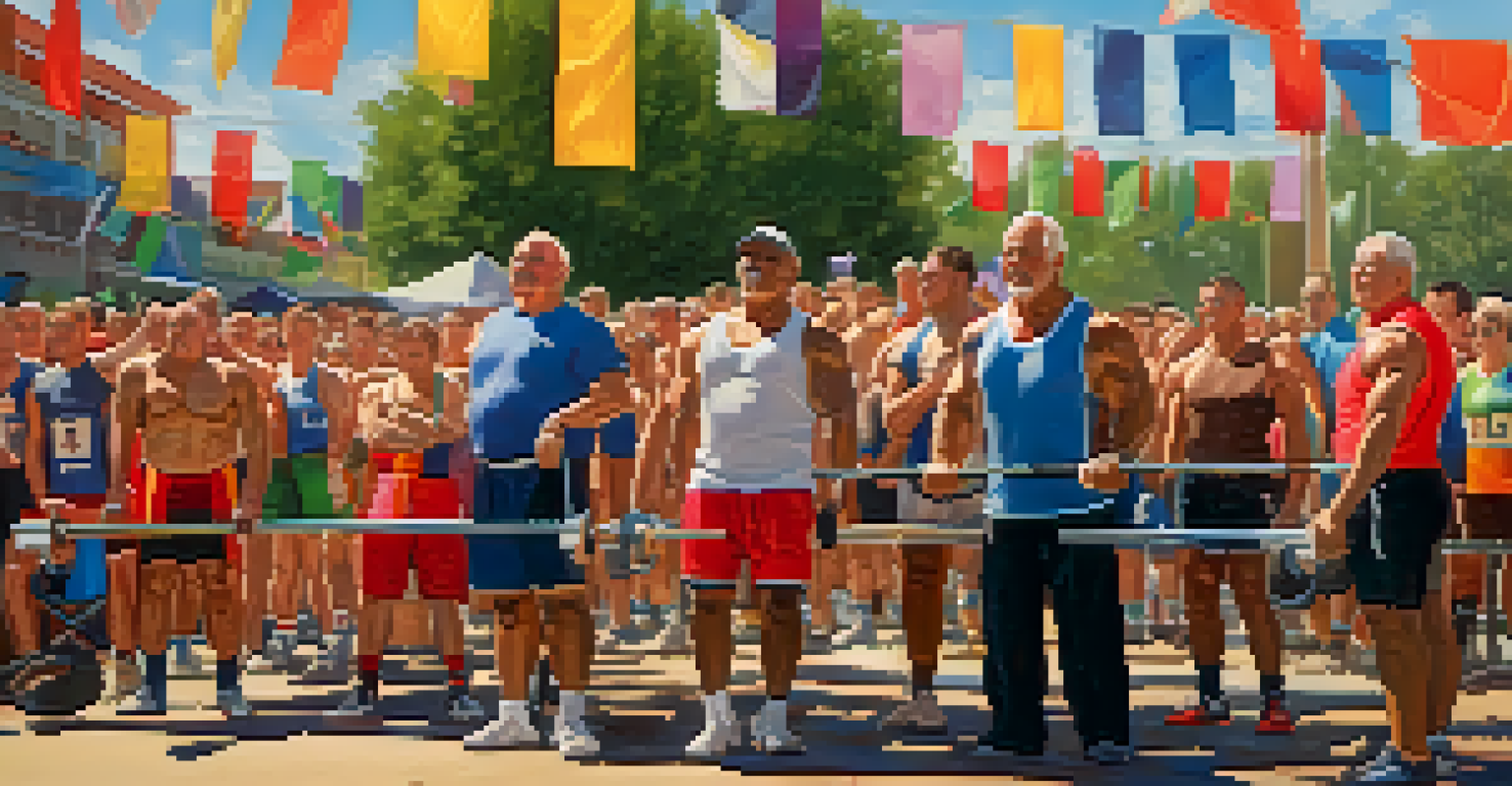Powerlifting Competitions: A Guide for Older Adult Athletes

Understanding Powerlifting and Its Benefits for Older Adults
Powerlifting is a strength sport focused on three main lifts: squat, bench press, and deadlift. Many older adults might think these activities are too intense, but they're actually great for building muscle and improving balance. Engaging in powerlifting can enhance overall fitness and promote independence in daily activities.
Strength does not come from physical capacity. It comes from an indomitable will.
As we age, maintaining muscle mass becomes crucial for preventing injuries and falls. Powerlifting, with its emphasis on progressive overload, encourages muscle growth and strength gains. Plus, the supportive community surrounding powerlifting can provide motivation and camaraderie, which is invaluable for older athletes.
It's important to approach powerlifting with the right mindset and preparation. Older adults can benefit from tailored training programs that consider their individual needs, abilities, and goals. With the right guidance, powerlifting can be a safe and rewarding pursuit at any age.
Getting Started: Essential Tips for Older Adult Athletes
Before diving into powerlifting, it's essential to consult with a healthcare provider, especially if you have pre-existing conditions. They can help you determine if powerlifting is a safe option for you and provide advice on how to start. This step ensures you're taking care of your health while pursuing your fitness goals.

Finding the right coach or training program is vital. Look for certified trainers who have experience working with older adults. They can help you learn proper techniques, establish a solid foundation, and create a personalized training plan that suits your unique needs.
Powerlifting Benefits Older Adults
Powerlifting helps older adults build muscle, improve balance, and maintain independence in daily activities.
Start slow and listen to your body. Begin with lighter weights and focus on mastering the form before progressing. Powerlifting is not a race; it's about gradual improvement and ensuring that you remain injury-free while building strength over time.
Choosing the Right Equipment for Powerlifting Competitions
Having the right equipment can make a significant difference in your powerlifting experience. Investing in quality gear, like a lifting belt, shoes, and knee sleeves, can enhance performance and provide support. These items help stabilize your body during lifts, reducing the risk of injury.
You are never too old to set another goal or to dream a new dream.
When selecting equipment, prioritize comfort and fit. It's worth trying on various brands and styles to find what works best for you. Properly fitted shoes, for instance, can improve your lifting technique and provide a solid foundation for your lifts.
Don't forget the importance of training attire. Comfortable, moisture-wicking clothing can help you feel more at ease during workouts and competitions. Feeling good in what you wear can boost your confidence, making you more prepared to tackle those weights!
Nutrition Tips to Fuel Your Powerlifting Journey
Nutrition plays a vital role in supporting your powerlifting goals, especially as an older athlete. A balanced diet rich in protein, healthy fats, and complex carbohydrates can help you build and repair muscle. Consider incorporating lean meats, whole grains, fruits, and vegetables into your meals for optimal nutrition.
Staying hydrated is equally important. Dehydration can impact performance and recovery, so ensure you're drinking enough water throughout the day. Consider carrying a reusable water bottle with you to remind yourself to sip regularly, especially during workouts.
Injury Prevention is Essential
Proper warm-ups, listening to your body, and incorporating rest days are crucial for preventing injuries in older powerlifters.
Lastly, don't underestimate the power of meal timing. Eating a small snack or meal rich in protein before and after training sessions can significantly enhance your energy levels and recovery. This simple strategy can make your workouts more effective and help you progress in your powerlifting journey.
Understanding Powerlifting Competitions: What to Expect
Powerlifting competitions can be thrilling and a bit daunting, especially for first-timers. Typically, competitors are grouped by age, weight class, and gender, allowing for a fair and supportive environment. Understanding the competition format and regulations can help ease any anxiety you might have before your first event.
Each lifter has three attempts for each lift, and the best successful lift in each category is combined for a total score. These scores determine the winners in each category. It's important to arrive early on competition day to familiarize yourself with the setup and process.
Remember, competitions are not just about winning; they're about personal achievements. Setting your own goals, whether that’s lifting a specific weight or simply finishing the event, can provide immense satisfaction. Embrace the experience, and celebrate your progress along the way!
Injury Prevention Strategies for Older Powerlifters
Injury prevention is crucial for older athletes, particularly in a demanding sport like powerlifting. Prioritizing proper warm-ups and cool-downs can significantly reduce the risk of injury. Dynamic stretches and mobility exercises before lifting help prepare your muscles and joints for the task ahead.
Listening to your body is another key strategy. If you feel pain or discomfort during training, it's essential to stop and assess the situation. Pushing through pain can lead to serious injuries, so don't hesitate to consult with a professional if something doesn't feel right.
Community Support Enhances Training
Joining powerlifting groups fosters motivation, camaraderie, and a sense of belonging, making the fitness journey more enjoyable.
Incorporating rest days into your training schedule is just as important as the workouts themselves. Rest allows your body to recover and rebuild, making it stronger for future lifts. Balancing training intensity with adequate recovery will help you stay injury-free and continue enjoying powerlifting for years to come.
The Power of Community: Joining Powerlifting Groups
One of the most rewarding aspects of powerlifting is the sense of community that comes with it. Joining a local powerlifting club or online group can provide you with invaluable support and encouragement. Surrounding yourself with like-minded individuals can help you stay motivated and committed to your training.
These communities often offer training partners, workshops, and events that can enhance your experience. Participating in group workouts can also help you learn new techniques and tips from other lifters. Plus, sharing your journey with others can foster friendships and connections that last well beyond the gym.

Don't hesitate to seek out competitions or events specifically for older lifters. These gatherings focus on inclusivity and provide a fantastic environment to celebrate achievements at any age. Engaging with your community can make your powerlifting journey more enjoyable and fulfilling.